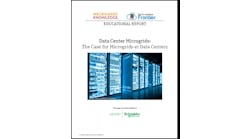December 12, 2012
A look across the US landscape reveals several rich markets for energy efficiency over the next year. Some emerge out of unfortunate natural disasters; others arise from the growing realization by state governments that it is typically cheaper to save energy than produce it.
Superstorm Sandy leveled neighborhoods in New York, cracked coastal mansions in half, and left tens of thousands still without power weeks after its devastating late October strike. Some buildings were so damaged, utilities simply could not re-connect them to the grid.
With $32 billion in rubble left behind, the rehabilitation effort in the New York is huge. It requires new walls, roofs, wires, lights, heating systems and appliances, offering a tremendous opportunity to introduce more efficient replacements.
To that end, environmental groups are pushing New York regulators to redirect some of the state’s energy efficiency money into a disaster relief fund. The money could go toward incentives that would encourage New Yorkers to choose efficient building materials and appliances as they rebuild.
Not doing so would constitute a missed opportunity, one that the state is likely to regret as it struggles to meet a goal to cut energy use 15 percent by 2015, according to a letter signed by Pace Energy & Climate Center, Sierra Club, Alliance for Clean Energy New York, Natural Resources Defense Council, Citizens Campaign for the Environment, and Environmental Advocates of New York.
After all, the time to encourage an efficient purchase is when an appliance breaks. That’s when consumers buy new models; they rarely replace working appliances just to upgrade to a more efficient model.
“New York must emerge from the post-Sandy recovery with a more efficient and resilient electric landscape, but that requires an all hands on deck approach,” the groups said in the letter to the New York Public Service Commission.
Even if state regulators do not allot the funds, opportunity still exists now in New York for energy efficiency companies and contractors, especially those who can offer financing that avoids any upfront costs to homeowners and businesses. Such financing is not only spurring energy efficiency nationally, but also solar panel installations.
In addition to bread and butter energy efficiency – insulation, windows, appliances – the superstorm reconstruction gives New York a chance to innovate. It opens the door for companies that install smart grid devices and onsite power. Governor Andrew Cuomo, New York City Mayor Michael Bloomberg and other leaders have emphasized that as utilities rebuild New York’s grid, they must consider new technologies to fortify the city against future storms. Consolidated Edison, which serves New York City, has already stepped up to the plate, committing $250 million to strengthen and modernize its energy delivery system as a result of Sandy.
Meanwhile, as is often the case during power outages, the storm offered a chance for combined heat and power (CHP) to strut its stuff. CHP is highly efficient because from one fuel it produces two forms of energy. The technology also serves as back-up generation. CHP units operate onsite, so do not rely on utility wires that are often the primary victims of wind and falling trees in severe storms. When the grid is down, CHP systems can continue to heat, cool and provide lights for a building.
New York City has encouraged installation of CHP in its commercial buildings for some time. So it is not surprising that stories are now floating around the Internet about buildings with CHP that never lost power. Among them are buildings owned by New York University and a 14,000-unit Bronx apartment complex called Co-op City. In nearby Connecticut, Fairfield University retained electricity during Sandy because of its CHP system, as did Princeton University in New Jersey, according to the Houston Advanced Research Center.
Opportunity for CHP is growing not just in the Northeast, but nationwide because of a goal set by President Barack Obama for the US to add 40 GW of CHP by 2020, a 50 percent increase in today’s CHP capacity. The goal is ambitious, but government and industry players have set to work to make it happen.
Reconstruction from Hurricane Sandy opens new doors for CHP and other forms of energy efficiency. But New York is certainly not the only place business is likely to boom next year. Next week’s blog looks at California, Massachusetts, Connecticut and other markets poised to thrive – as long as the federal ‘fiscal cliff’ does not undermine the energy efficiency industry’s prosperity.
To get part II of “Markets for energy efficiency in 2013” delivered free to your mailbox, sign up for Elisa Wood’s free energy efficiency newsletter at RealEnergyWriters.com.






